Top 10 Pilgrimage Sites in Jordan

1. Bethany Beyond the Jordan (Al-Maghtas)
Bethany Beyond the Jordan, also known as Al-Maghtas, is one of the most significant Christian pilgrimage sites in Jordan. It is traditionally recognized as the location where John the Baptist baptized Jesus Christ. Situated on the eastern bank of the Jordan River, this site holds profound historical and spiritual importance. Pilgrims visiting Al-Maghtas can explore the archaeological remains of ancient churches, baptismal pools, and the steps leading into the river where Jesus was baptized. The site offers a serene environment for reflection and prayer, enhancing the spiritual experience for all who visit.
The significance of Bethany Beyond the Jordan extends beyond its biblical history. It is a UNESCO World Heritage site, recognized for its unique cultural and religious value. The area has been meticulously preserved, offering visitors a glimpse into the early Christian era. The site includes a visitor center with exhibits detailing the history and importance of the location. Pilgrims can participate in guided tours that provide deeper insights into the biblical events that took place here, making it a must-visit destination for those seeking a profound connection to their faith.

2. Mount Nebo
Mount Nebo is a revered pilgrimage site in Jordan, known for its biblical significance as the place where Moses was granted a view of the Promised Land before his death. Located approximately 10 kilometers northwest of Madaba, Mount Nebo offers breathtaking panoramic views of the Jordan Valley, the Dead Sea, and, on clear days, Jerusalem. Pilgrims visit the Moses Memorial Church, which stands on the mountain’s summit. The church houses beautiful mosaics dating back to the Byzantine period, depicting various scenes of wildlife and hunting.
Mount Nebo is not only a site of spiritual reflection but also of historical and archaeological interest. The site’s Franciscan custodians have uncovered significant artifacts and remnants of ancient structures, including a Byzantine monastery. The serene environment, coupled with the historical and religious context, provides a unique pilgrimage experience. Visitors can spend time in prayer and contemplation while enjoying the natural beauty of the surrounding landscape. Mount Nebo remains a testament to the enduring legacy of Moses and his significance in Judeo-Christian traditions..
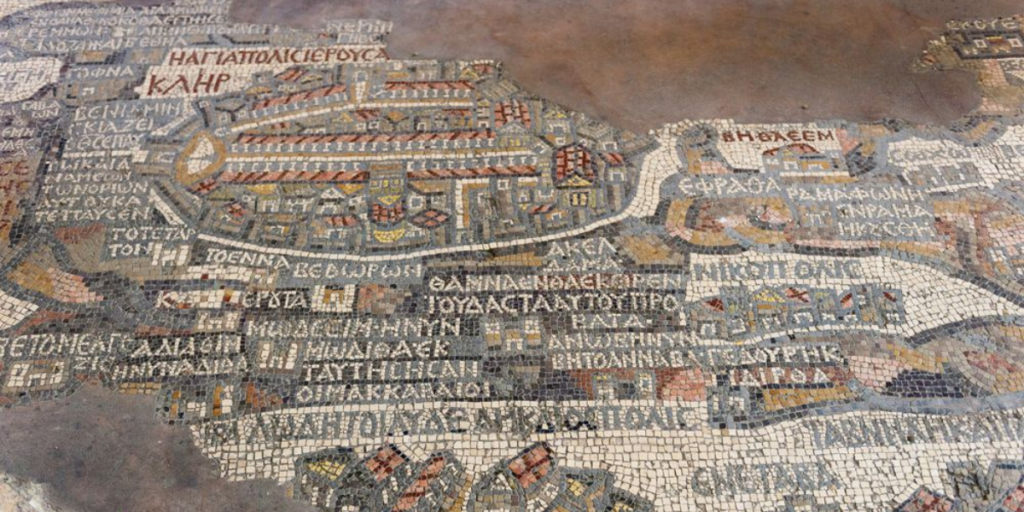
3. Madaba and the Madaba Map
Madaba, often referred to as the “City of Mosaics,” is renowned for its stunning Byzantine and Umayyad mosaics, particularly the famous Madaba Map. This mosaic map, discovered in the Church of Saint George, dates back to the 6th century and is the oldest known map of the Holy Land. The map vividly depicts the geography of the region, including Jerusalem, Bethlehem, and other biblical sites, providing invaluable insights into the area’s historical landscape. Pilgrims visiting Madaba can explore this remarkable artifact and gain a deeper understanding of the biblical world.
Beyond the Madaba Map, the city itself is a treasure trove of ancient mosaics and historical sites. The Archaeological Park and Museum of Madaba showcase a vast collection of mosaics from different periods, highlighting the city’s rich cultural heritage. Pilgrims can also visit the Church of the Apostles, known for its intricate floor mosaics depicting scenes of nature and mythology. Madaba’s blend of religious history and artistic heritage makes it a significant destination for those seeking to connect with the ancient Christian world.
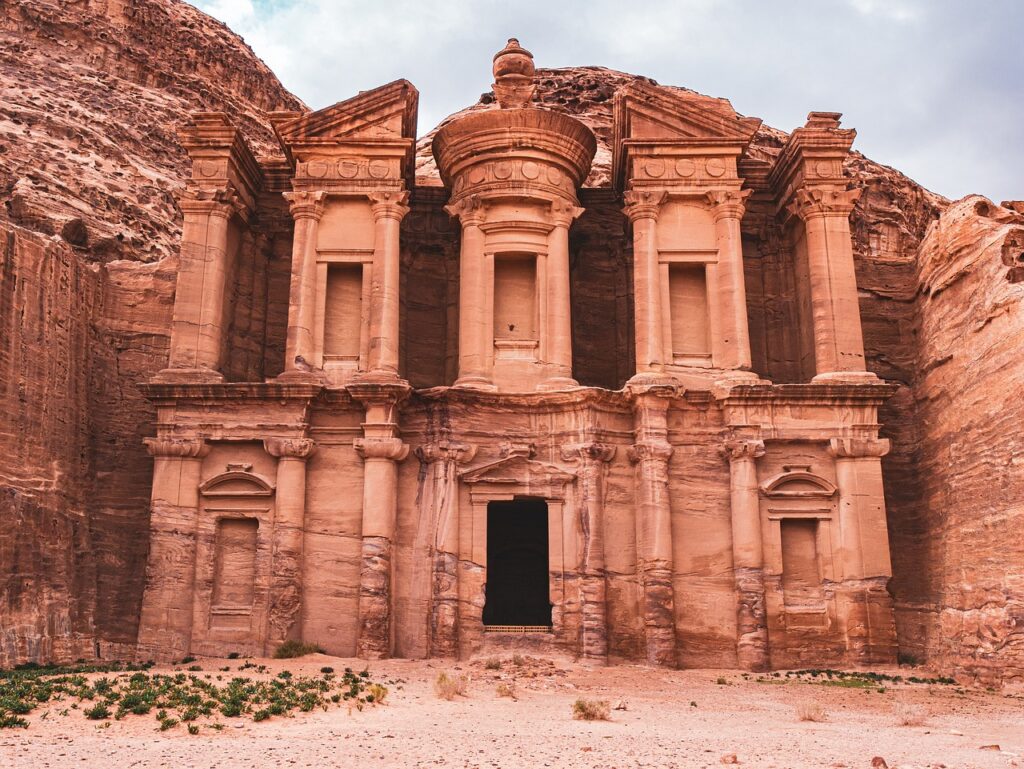
4. Petra
Petra, one of the New Seven Wonders of the World, is not only a major tourist attraction but also holds religious significance for Christian pilgrims. Known as the “Rose City” for its pink sandstone cliffs, Petra was once the capital of the Nabataean Kingdom and is now a UNESCO World Heritage site. Christian pilgrims visit Petra to see the Monastery (Al-Deir), believed to have been used as a church during the Byzantine era. The site’s extensive network of tombs, temples, and ancient structures offers a glimpse into the region’s rich history and biblical connections.
The journey through Petra begins with a walk through the Siq, a narrow gorge leading to the iconic Treasury (Al-Khazneh). Pilgrims can explore the ancient city’s vast archaeological remains, including the Royal Tombs, the Great Temple, and the Roman Theater. Petra’s historical significance extends to its role as a trade hub, where different cultures and religions intersected. For Christian pilgrims, Petra provides an opportunity to reflect on the region’s historical context and its role in the broader narrative of biblical history.
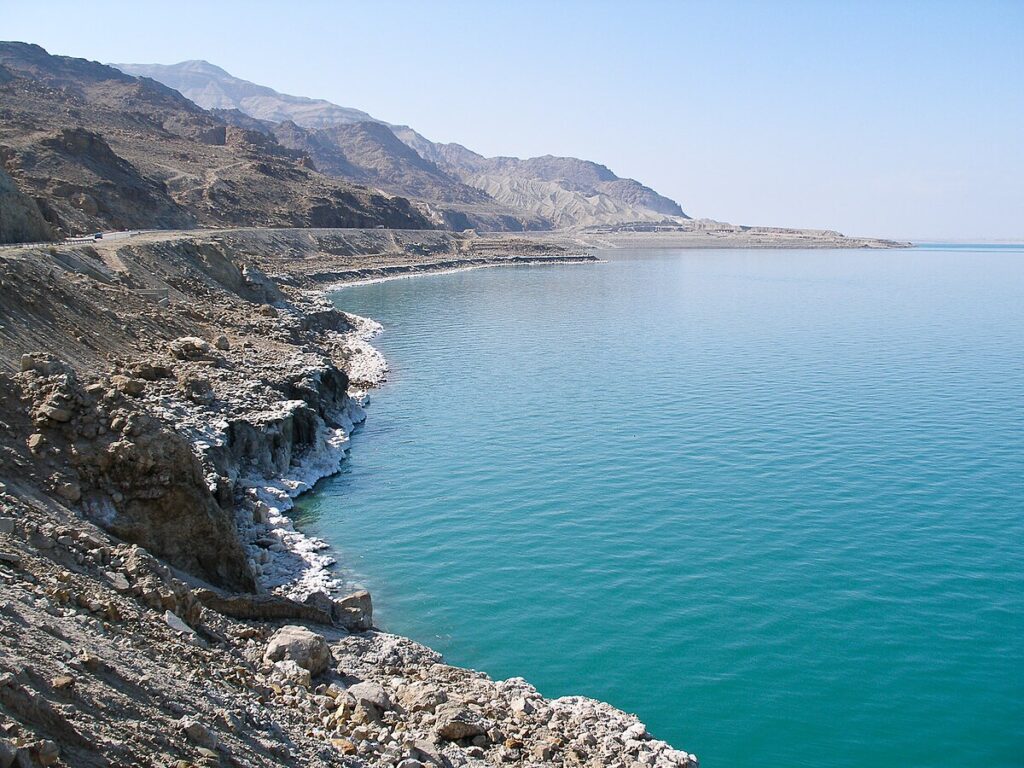
5. The Dead Sea
The Dead Sea, located at the lowest point on Earth, is a unique pilgrimage destination known for its biblical significance and therapeutic properties. It is mentioned in the Bible as the “Salt Sea” and is associated with stories of Sodom and Gomorrah. Pilgrims visiting the Dead Sea can experience the buoyant waters, rich in minerals, which have been renowned for their healing properties since ancient times. The surrounding landscape, characterized by stunning desert vistas and salt formations, adds to the spiritual and natural allure of the area.
A visit to the Dead Sea offers more than just a unique swimming experience. Pilgrims can explore nearby historical and biblical sites, such as the caves of Qumran, where the Dead Sea Scrolls were discovered. These scrolls, dating back to the Second Temple period, include some of the oldest known manuscripts of the Hebrew Bible. The area also provides opportunities for reflection and meditation in a serene and otherworldly setting. The Dead Sea region combines natural beauty with profound historical and religious significance, making it a compelling destination for Christian pilgrims.
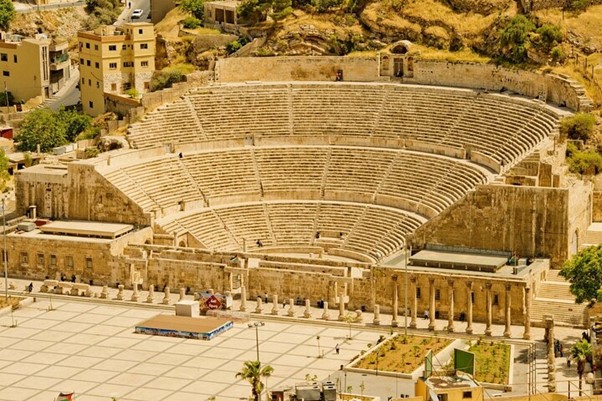
6. Anjara
Anjara is a significant pilgrimage site in Jordan, believed to be a place where Jesus and his disciples passed through. Located in the hills of northern Jordan, Anjara is home to the Church of Our Lady of the Mountain, which commemorates the Virgin Mary’s resting place during her journey through the region. Pilgrims visit Anjara to pray and seek blessings, drawn by the site’s serene environment and its association with the Holy Family.
The church in Anjara contains a revered statue of the Virgin Mary and has become a popular destination for Christian pilgrims. The peaceful setting and the church’s spiritual ambiance offer a place for prayer and contemplation. Anjara’s significance is further highlighted by its inclusion in several pilgrimage routes, making it a key stop for those exploring the biblical and historical sites of Jordan. The combination of religious heritage and natural beauty makes Anjara a meaningful destination for pilgrims seeking spiritual renewal.

7. Mukawir
Mukawir, known historically as Machaerus, is a fortified hilltop palace with significant biblical connections. It is famously known as the location where John the Baptist was imprisoned and later beheaded by order of King Herod Antipas. Situated east of the Dead Sea, Mukawir offers stunning panoramic views of the surrounding landscape. Pilgrims visiting Mukawir can explore the archaeological remains of Herod’s palace, including the fortress walls, cisterns, and other structures that date back to the Herodian period.
The site of Mukawir holds profound historical and spiritual significance for Christian pilgrims. The story of John the Baptist’s martyrdom is a powerful reminder of faith and sacrifice. The journey to Mukawir involves a hike up the hill, adding a physical dimension to the pilgrimage experience. Once at the summit, pilgrims can reflect on the biblical events that took place there while taking in the breathtaking views. Mukawir’s combination of historical intrigue and spiritual resonance makes it a compelling destination for those seeking to connect with their faith.
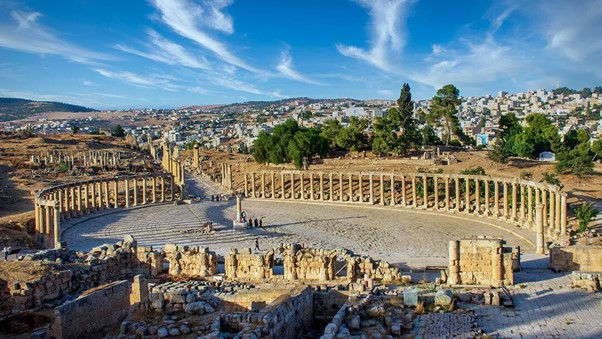
8. Jerash
Jerash, known as the “Pompeii of the East,” is one of the best-preserved Roman cities in the world and a significant pilgrimage site in Jordan. While not directly mentioned in the Bible, its historical and architectural grandeur provides context for understanding the world during the time of Jesus and the early Christians. Pilgrims visiting Jerash can explore its impressive ruins, including the Oval Plaza, the Temple of Artemis, the South Theater, and the Cardo Maximus, a colonnaded street that runs through the heart of the city.
The city of Jerash offers a glimpse into the life and culture of a thriving Roman metropolis. Its well-preserved structures and extensive archaeological remains provide valuable insights into the region’s history. For pilgrims, Jerash is a place to reflect on the broader historical and cultural context of the biblical narrative. The city’s blend of ancient history and vibrant cultural heritage makes it a fascinating and enriching destination for those on a pilgrimage journey.
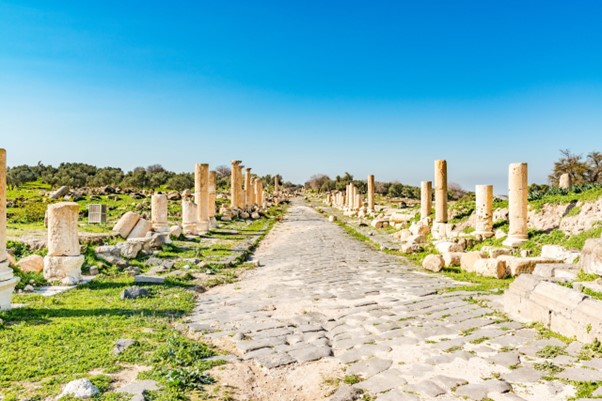
9. Umm Qais
Umm Qais, anciently known as Gadara, is a significant pilgrimage site mentioned in the Bible. It is renowned for the miracle of Jesus casting out demons from two men and sending them into a herd of pigs (Matthew 8:28-34). The site offers panoramic views of the Sea of Galilee, the Golan Heights, and the Yarmouk River. Pilgrims visiting Umm Qais can explore the well-preserved ruins of the Greco-Roman city, including the theater, basilica, and streets lined with ancient columns.
The significance of Umm Qais extends beyond its biblical connections. The city was a center of culture and learning in the ancient world, attracting poets and philosophers. The ruins provide a glimpse into the architectural and cultural achievements of the time. For Christian pilgrims, Umm Qais offers a unique opportunity to connect with the biblical narrative in a historically rich setting. The serene environment and the site’s historical depth make it a place for both reflection and exploration.

10. The Citadel and Roman Theater in Amman
The Citadel and Roman Theater in Amman are significant historical and cultural landmarks that offer a unique pilgrimage experience. The Amman Citadel, perched on one of the city’s highest hills, provides panoramic views of the ancient and modern parts of Amman. The site is home to several important structures, including the Temple of Hercules, the Umayyad Palace, and a Byzantine church. Pilgrims visiting the Citadel can explore these ancient ruins and gain insight into the city’s rich history, which spans from the Neolithic period to the Islamic era.
The nearby Roman Theater, a grand 6,000-seat amphitheater built during the reign of Emperor Antoninus Pius, is another highlight of Amman. This well-preserved structure is still used for cultural events and performances today. Pilgrims can walk through the theater, imagining the historical performances and gatherings that took place there. The theater’s location at the foot of the Citadel hill and its impressive architecture offer a glimpse into the grandeur of Roman-era Amman, making it a must-visit for those exploring the city’s historical and religious heritage.
